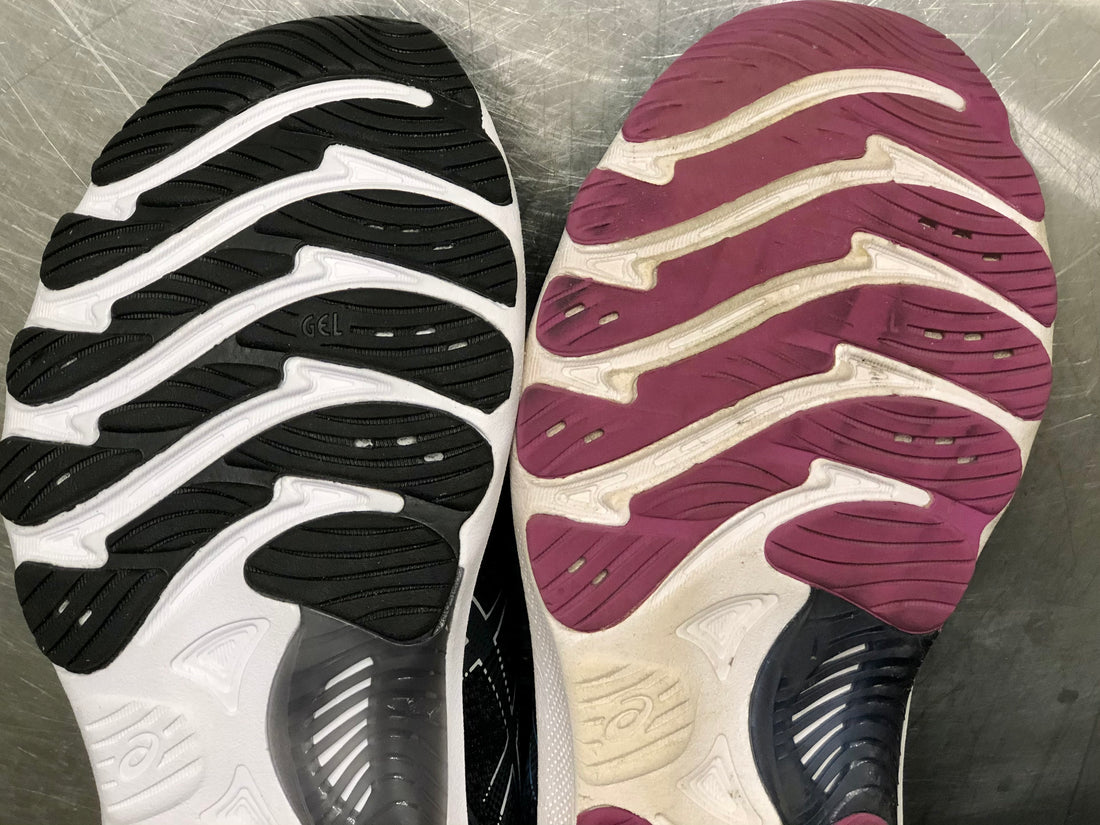
(Hoka Rocket)
Understanding the Life Span of Your Running/Walking Shoes
A great pair of running shoes can be hard to replace. You learn to love them, they have served you well, together you created wonderful memories, and saying goodbye to your shoes can be bittersweet. When the time comes, investing in the right shoe can prevent injuries, maximize performance, and outfit you in style.
Knowing when to replace your shoes obviously causes some confusion, as one of the most common questions we get at Springfield Running Center is “How long should my running shoes last?” The answer can vary for every runner, based upon your unique body, running style and current level of training. Here are some general guidelines that we can work through with you when we fit you for the perfect shoe.
Miles
Most training shoes are developed to function at a high level for 300-500 miles. For a professional runner, that might mean replacing shoes after 4-5 weeks, but running a fun, casual 20 miles per week should get you 4-6 months out of your shoes. Therefore, we recommend tracking the number of miles you put on your shoes. Many running apps (Garmin, Strava) will do it for you.
Sometimes your running shoes might feel so good that you wear them all the time. Understand that these extra miles will also affect the lifespan of your shoes.
Finally, alternating two pairs of shoes, allowing the internal structure of your shoes to recover, prolongs the life of each pair.
Running Form
Every runner has their own unique running form, and the way you run will affect how long your shoes last. For example, heel strikers break down shoes more quickly than midfoot runners. Bringing your old shoes in to the store can be immensely helpful. We can look at the wear pattern to interpret how you run and choose a shoe best suited for how your feet strike the ground.
Body Type
Your individual body type will influence how you run, how quickly you go through running/walking shoes, and which shoes we recommend for you. A lighter runner might get more miles on a pair of shoes than a heavier runner. A shorter runner puts many more steps per mile on their shoes than a taller runner. Understanding your unique build allows us to recommend the best shoe for you.
Running Surface
The type of surface you run on will also affect how long your shoes last. Are you running on roads, trails, a treadmill, crushed limestone, maybe even a track? Talk to us about the surface you run on, then we can recommend a shoe that is designed to give you maximum life on that surface.
Never judge a book by the cover
Clearly, if the tread on your shoes is worn bald, if your toes have worn through the upper, or the heal is broken down, it is time to replace your shoes. However, the real magic of a running shoe is on the inside. The foams and gels, carbon plates and guide rails, trusses and ramps are what truly support your feet while you run or walk. Eventually, these components will wear out, even if the outside of your shoes still look great. Just as “new car smell” eventually fades, the “new shoe feel” will go away. Once your shoes lose their spring and bounce, it is time to begin thinking about replacing them.


(Both shoes are Asics Nimbus 23, left = new & never worn, right = 500+ miles) Time to bring in the new shoe, as the midsole is now worn down.
Never wait until you are having pain
Worn out running/walking shoes will gradually cause you to experience soreness or pain in your feet, shins, knees, hips and back. Understanding the lifespan of your shoes will hopefully motivate you to replace them before you are experiencing injuries or pain.
A new pair of shoes that feels natural and comfortable in the store should feel great out on the roads and trails. Let us help you choose the perfect pair for your feet.

Saucony Endorphin Pro - Brand New

